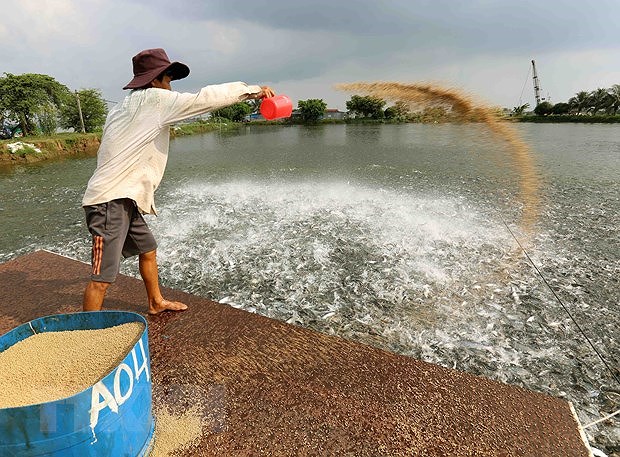The Mekong Delta province of Dong Thap is striving to reduce the ratio of poor households by 0.5 percent in the end of 2021, according to a plan released by the provincial People’s Committee on the implementation of the National Target Programme on sustainable poverty reduction and social welfare.
 Tra fish farming. Illustrative image (Source: VNA)
Tra fish farming. Illustrative image (Source: VNA) – The Mekong
Delta province of Dong Thap is striving to reduce the ratio of poor households
by 0.5 percent in the end of 2021, according to a plan released by the
provincial People’s Committee on the implementation of the National Target
Programme on sustainable poverty reduction and social welfare.
In recent years, Dong Thap has seen a dramatic
drop in the ratio to 1.86 percent in 2020 from 2.73 percent in 2019.
Various support policies have been applied,
including providing credit for poor and near-poor households as well as those
just escaped from poverty, and poor students. Last year, more than 443 billion
VND was provided to more than 13,000 households.
Meanwhile, more than 124,800 health
insurance cards have been handed over to poor locals, while more than 26,000
students have received learning support, and nearly 1,400 houses have been
built for poor households.
As part of efforts to implement Resolution
42/NQ-CP issued by the Prime Minister dated April 9, 2020 on measures to assist
COVID-19-impacted people, Dong Thap has provided more than 180 billion VND to
more than 183,400 needy people to help them ease difficulties and stablise
their life.
At the same time, the provincial Vietnam
Fatherland Front (VFF) Committee and member orgaisations have mobilised more
than 300 billion VND from the society and over 84 scholarships worth 51 billion
VND for the poor.
Doan Tan Buu, Vice Chairman of the Dong
Thap People’s Committee said that in order to complete the target of reducing
the poverty ratio by 0.5 percent by the end of this year, the province will
focus on associating the implementation of sustainable poverty reduction with
the building of new-style rural areas.
Along with providing favourable conditions
for locals, especially those in rural areas to access basic social welfare, the
locality will conduct vocational training to rural labourers and increase
labour export, he said./.